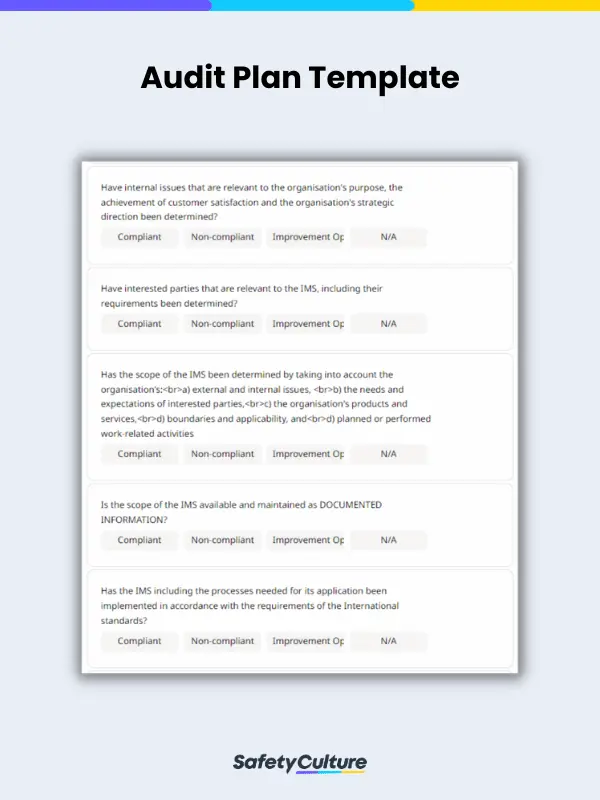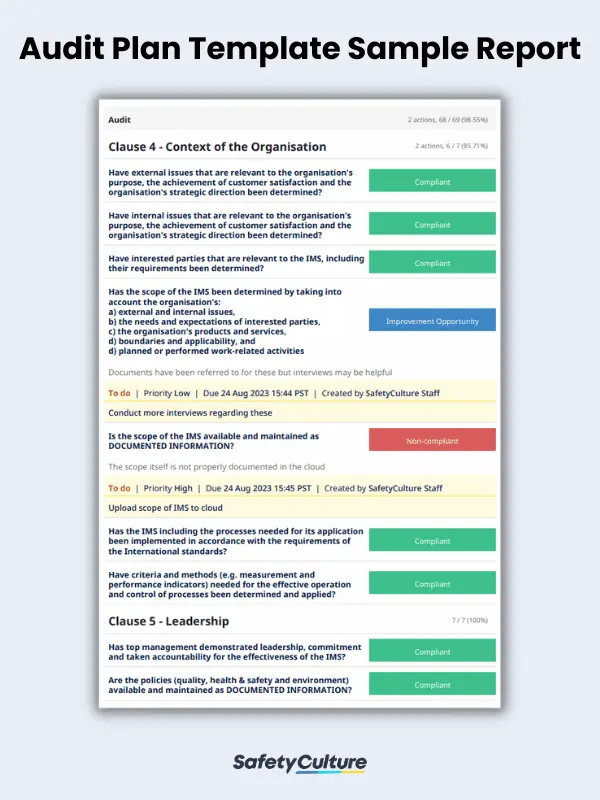What is an Audit Plan Template?
An audit plan template is a premade document that serves as a framework or foundation for auditors to properly audit different companies, businesses, processes, and standards. It can be used for internal and external purposes, covering a business’ finances, operations, procedures, compliance, and more.
Importance
Having a set audit plan template is an essential part of conducting any audit. Not only does it streamline the auditing process and ensures no important steps are missed, but it also helps in managing and maintaining compliance with internal standards, laws, and regulations. It serves as a backbone of all auditing tasks, audit plans, and auditing programs, as it lays out the objectives, scope, and timeline of the audit.
Other benefits of having an audit plan template include:
- Enhanced accountability for conducting audits
- More efficiently-managed risk management and mitigation plans
- Consistent compliance with industry standards, finance budgets, and safety protocols as agreed upon within the administration
- Efficient and practical allocation of resources such as staff, time, technology, and finances for operations
- Improved decision-making skills during an audit and after changes have been identified and implemented
What to Consider
There are different types and uses for an audit plan template. However, in all cases, the following should be considered when making your template and audit plan accordingly:
- What are the business risks to be aware of, and how should they be addressed?
- What areas of your operations and business have special considerations to be necessary during the auditing process?
- What are the standards and metrics you need to follow for auditing, and how flexible are they?
- What are the audit procedures to be followed?
- How will the findings of the audit be interpreted and documented?
- How long will the auditing process take?
- When will the auditing plan be finished and implemented?
What to Include in an Audit Plan Template
Generally, an audit plan template should have fields for the following:
- Date for the audit to be conducted on
- List of instructions, standards, and metrics to follow for the audit
- List of personnel involved in the auditing process
- Audit objectives, scope, and criteria
- Information about the pre-audit brief and list of tasks to audit
- List of aspects of a business to audit, such as leadership, operations, management, planning, performance evaluations, and documentation processes
- Recommendations for the business being audited based on findings
- Comments post-audit meeting
- Additional notes unrelated to the audit plan but are good to keep track of
Here is a sample digital audit plan template in use for reference:
FAQs about Audit Plan Templates
Audit plan templates come in different forms for different uses. Some of its types include:
- Internal audit plan template
- ISO compliance audit plan template
- Corrective action audit plan template
- Finance audit plan template
The frequency of an audit depends on many factors, such as existing problems, resources, and standards. However, typically a general audit happens annually, bi-annually, or quarterly. An audit can also be performed if significant changes happen to ensure all operations are flowing smoothly.
An audit plan is often carried out following these steps:
- Determine the purpose of the audit
- Define your goals and objectives
- Set the scope of your audit
- Plan your audit and conduct pre-audit meetings with your team
- Finalize the audit procedures to follow




